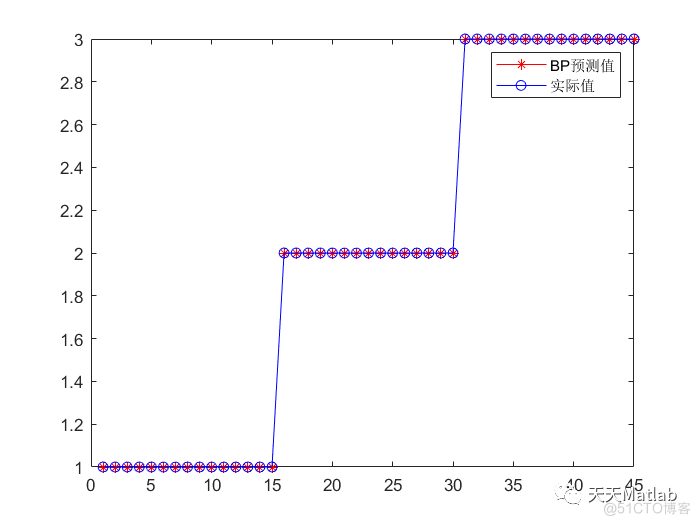1 简介 为了提高分类的准确性,降低因预测精度不高带来的电能损失,提出将花朵授粉算法(flower pollination algorithm,FPA)与BP神经网络相结合,利用FPA算法具有收敛速度快,全局搜索能力强的特点
1 简介
为了提高分类的准确性,降低因预测精度不高带来的电能损失,提出将花朵授粉算法(flower pollination algorithm,FPA)与BP神经网络相结合,利用FPA算法具有收敛速度快,全局搜索能力强的特点,对BP神经网络的权值和阈值进行优化,改善传统BP神经网络因权值和阈值的选择具有随机性而陷入局部最优和收敛速度慢的缺点.最后,通过某地区实际负荷数据验证了优化后的BP神经网络的预测精度得到了提高.
2 部分代码
%%%%%%%%%%%%%%%%%%%%%%%%%%%%%%%%%%%%%%%%%%%%%%%%%%%%%%%%%%%%%Flower Pollination Algorithm for Multimodal Optimization (MFPA)%Jorge G醠vez, Erik Cuevas and Omar Avalos%%This is the line to execute the code:%%[mem,bestSol,bestFit,optima,FunctionCalls]=FPA([500.255002]);%FitFunc implements the function to be optimized%%%%%%%%%%%%%%%%%%%%%%%%%%%%%%%%%%%%%%%%%%%%%%%%%%%%%%%%%%function [mem,bestSol,bestFit,optima,FunctionCalls]=FPA(para)% Default parametersif nargin<1, para=[50 0.25 500]; endn=para(1); % Population sizep=para(2); % Probabibility switchN_iter=para (3); % Number of iterationsphase = 1; %First statephaseIte= [0.5,0.9,1.01]; %State vector%Deb Functiond = 1;Lb = 0;Ub = 1;optima = [.1;.3;.5;.7;.9];% Initialize the populationfor i=1:n, Sol(i,:)=Lb+(Ub-Lb).*rand(1,d); Fitness(i)=fitFunc(Sol(i,:)); %%Evaluate fitness functionend% Initialice the memory[mem,bestSol,bestFit,worstF] = memUpdate(Sol,Fitness, [], zeros(1,d), 100000000, 0, phase,d,Ub,Lb);S = Sol;FunctionCalls = 0;% Main Loopfor ite = 1 : N_iter, %For each pollen gamete, modify each position acoording %to local or global pollination for i = 1 : n, % Switch probability if rand>p, L=Levy(d); dS=L.*(Sol(i,:)-bestSol); S(i,:)=Sol(i,:)+dS; S(i,:)=simplebounds(S(i,:),Lb,Ub); else epsilon=rand; % Find random flowers in the neighbourhood JK=randperm(n); % As they are random, the first two entries also random % If the flower are the same or similar species, then % they can be pollenated, otherwise, no action. % Formula: x_i^{t+1}+epsilon*(x_j^t-x_k^t) S(i,:)=S(i,:)+epsilon*(Sol(JK(1),:)-Sol(JK(2),:)); % Check if the simple limits/bounds are OK S(i,:)=simplebounds(S(i,:),Lb,Ub); end Fitness(i)=fitFunc(S(i,:)); end %Update the memory [mem,bestSol,bestFit,worstF] = memUpdate(S,Fitness,mem,bestSol,bestFit,worstF,phase,d,Ub,Lb); Sol = get_best_nest(S, mem, p); FunctionCalls = FunctionCalls + n; if ite/N_iter > phaseIte(phase) %Next evolutionary process stage phase = phase + 1; [m,~]=size(mem); %Depurate the memory for each stage mem = cleanMemory(mem); FunctionCalls = FunctionCalls + m; endend%Plot the solutions (mem) founded by the multimodal frameworkx = 0:.01:1;y = ((sin(5.*pi.*x)).^ 6);plot(x,y)hold onplot(mem(:,1),-mem(:,2),'r*');3 仿真结果

 编辑
编辑
4 参考文献
[1]牛庆、曹爱民、陈潇一、周冬. 基于花朵授粉算法和BP神经网络的短期负荷预测[J]. 电网与清洁能源, 2020, 36(10):5.
博主简介:擅长智能优化算法、神经网络预测、信号处理、元胞自动机、图像处理、路径规划、无人机等多种领域的Matlab仿真,相关matlab代码问题可私信交流。
部分理论引用网络文献,若有侵权联系博主删除。
